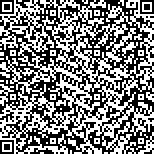靳婷婷,潘冰玉,黄真,王群,谢斌,罗春.脑卒中偏瘫患者未受累侧上肢够物动作的生物力学研究[J].中华物理医学与康复杂志,2017,39(10):732-737
扫码阅读全文

|
| 脑卒中偏瘫患者未受累侧上肢够物动作的生物力学研究 |
| Hemiplegia affects the biomechanics of reaching with the unaffected upper limb |
| |
| DOI: |
| 中文关键词: 脑卒中 非受累上肢 够物 运动学 表面肌电 |
| 英文关键词: Stroke Reaching Kinematics Electromyography |
| 基金项目:国家自然科学基金资助项目(81272166) |
|
| 摘要点击次数: 6483 |
| 全文下载次数: 6795 |
| 中文摘要: |
| 目的 分析脑卒中偏瘫患者未受累侧(健侧)上肢在够物动作中的生物力学特性。 方法 选取脑卒中偏瘫患者30例设为患者组,另选取健康受试者23例作为对照组。2组受试者均接受上肢够物测试,够物过程分为肩前屈和保持两个阶段。采用表面肌电技术和穿戴式微型运动捕获系统同步采集并提取上肢够物时相关肌肉的表面肌电参数(均方根值、积分肌电值)和三维运动学数据(躯干扭转度、肩关节运动幅度、肩关节运动速度、等张失稳度、肩关节角度分散度),患者组依据未受累上肢是否为利手侧,将其分为利手侧和非利手侧进行分别采集,对照组利手和非利手侧均进行采集,然后采用秩和检验对相关数据进行统计学分析。 结果 患者利手侧在前屈阶段斜方肌上部均方根值为34.3μV,躯干扭转度为-1.4°,均高于对照组利手侧的19.7μV和-2.3°,组间差异均有统计学意义(P<0.05),而肩关节运动速度则低于对照组利手侧,差异有统计学意义(P<0.05);在保持阶段斜方肌上部,患者利手侧均方根值为55.4μV,高于对照组利手侧,胸大肌均方根值和三角肌前组/斜方肌上部积分肌电值均低于对照组利手侧,差异均有统计学意义(P<0.05)。患者非利手侧在前屈阶段三角肌中组均方根值高于对照组非利手侧,肩关节运动速度低于对照组非利手侧的,组间差异均有统计学意义(P<0.05)。对照组双侧比较,在前屈阶段,非利手侧斜方肌上部均方根值大于利手侧,三角肌前组/斜方肌上部积分肌电值比在前屈和保持阶段均小于利手侧,组内差异均有统计学意义(P<0.05)。 结论 无论脑卒中偏瘫患者的未受累上肢是利手侧还是非利手侧,其够物动作的生物力学特点与健康人对应侧上肢并非完全一致,在对脑卒中偏瘫患侧上肢进行生物力学研究时最好以健康人对应侧上肢作为对照。 |
| 英文摘要: |
| Objective To analyze the bio-mechanics when hemiplegics reach with the unaffected upper limb. Methods Thirty post-stroke hemiplegics were selected into the patient group, while 23 healthy counterparts were chosen for the control group. Both groups completed a reaching test of their upper limbs which divided reaching into a moving stage and a holding stage. Surface electromyography (sEMG) data were recorded during the tests along with the degree of torso twist, the range of motion of the shoulder, movement velocity, smoothness of movement and angle divergence collected using a wearable micro-sensor motion capture system. Results For the stroke patients whose dominant upper limb was unaffected, the average root mean square (RMS) signal from the upper trapezius (34.3 μV) and the average torso twist (-1.4°) in the moving phase were significantly larger than among the control subjects (19.7 μV and -2.3°), but their average movement velocity was significantly slower. In the holding phase the average RMS signal from the upper trapezius (55.4 μV) was still significantly higher than in the control group, but their average pectoralis major signal and the integrated EMG ratio of the anterior segments of the deltoid and upper trapezius muscle pairs were significantly lower. For the stroke patients whose dominant upper limbs were affected, in the moving phase their average signal from the middle segments of the deltoid were significantly greater than those of the controls, but their movement velocity was significantly slower. For the control subjects, in the moving phase the average signal from the upper trapezius on their non-dominant side was significantly higher than that from the dominant upper limb. The integrated EMG ratio from the anterior segments of the deltoid and upper trapezius muscle pairs on that side was smaller throughout the whole reaching movement. Conclusion The bio-mechanical characteristics in reaching of the unaffected upper limbs of stroke patients are not the same as those of the corresponding upper limbs of healthy subjects. It is more reasonable to select the corresponding upper limbs of healthy subjects as controls when a bio-mechanical study of the affected upper limbs is conducted. |
|
查看全文
查看/发表评论 下载PDF阅读器 |
| 关闭 |